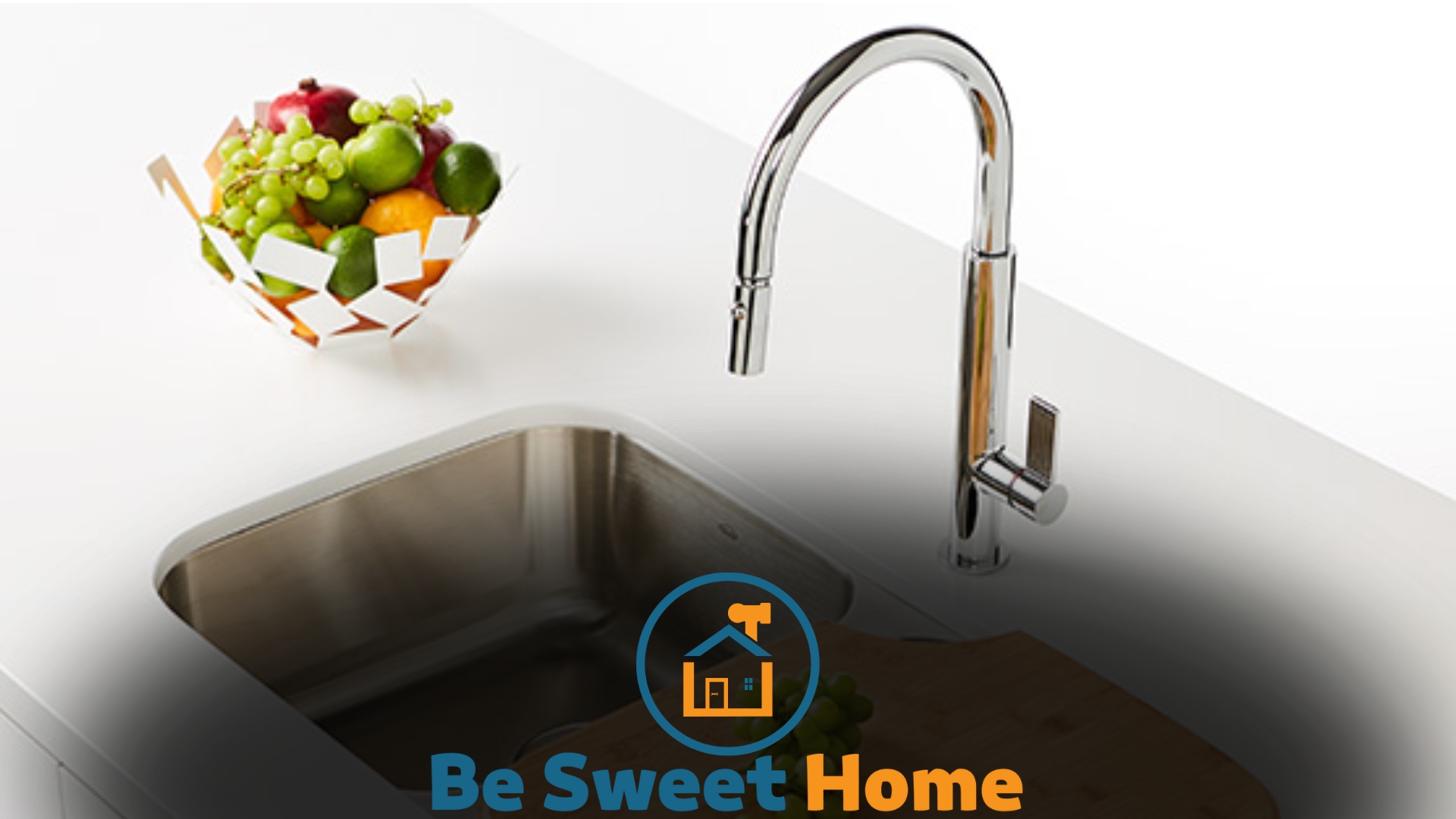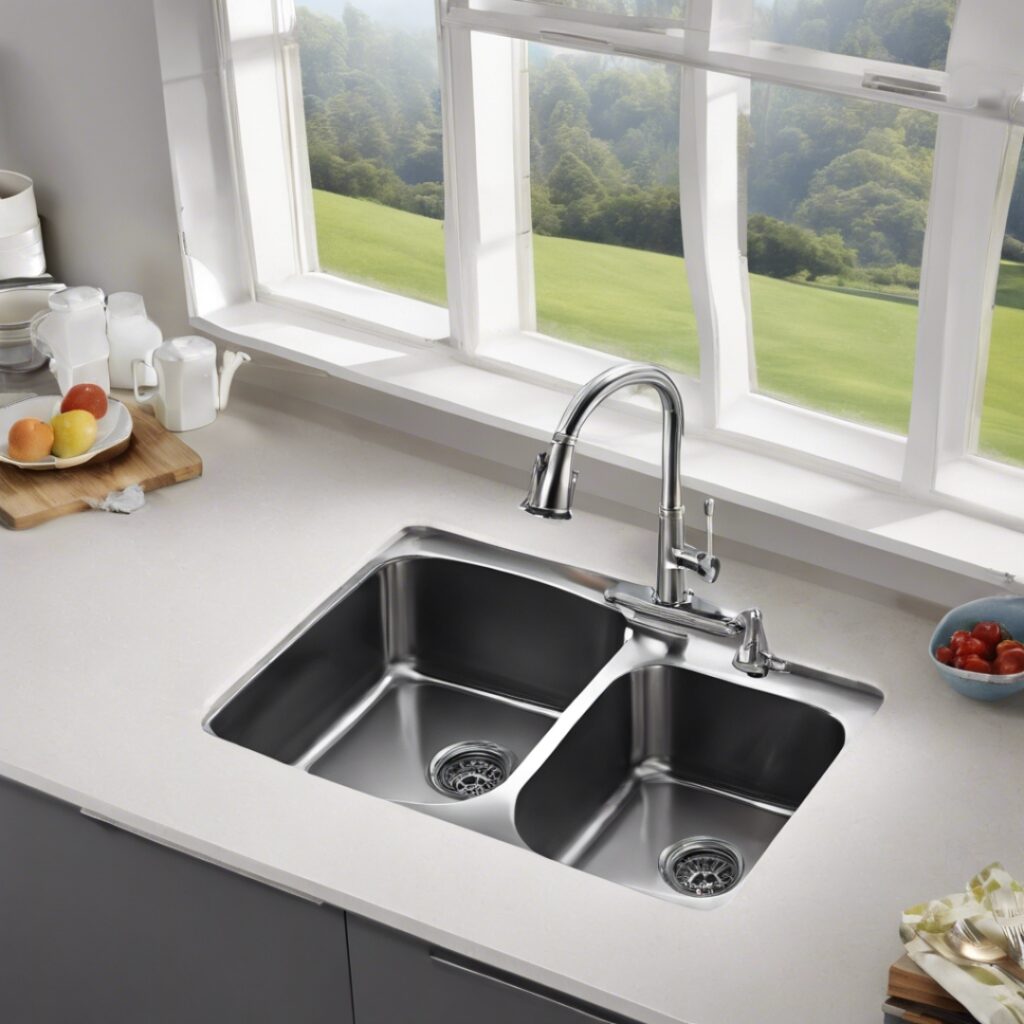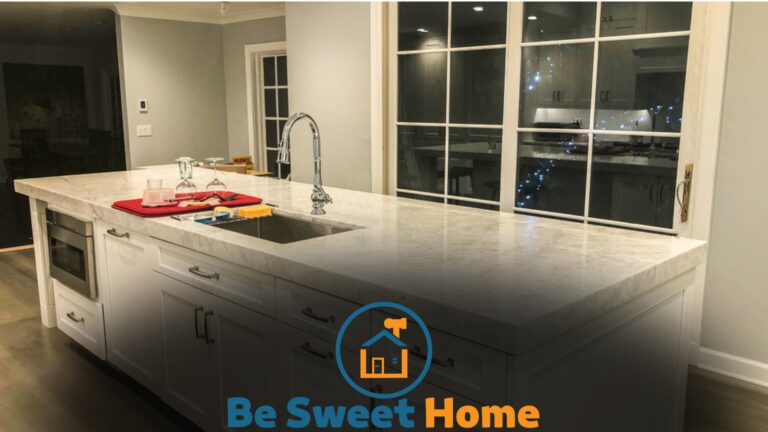

Consider size, material, and configuration to choose the right kitchen sink. Assess your kitchen’s layout and usage habits effectively.
Selecting the right kitchen sink is vital for the functionality and aesthetic of your cooking space. Your kitchen’s layout sets the stage, demanding a sink that fits perfectly in dimensions and style.
Usage also plays a key role; frequent cooks may need a deep, multi-basin sink for convenience.
Material choice affects durability and maintenance, from stainless steel’s resilience to granite’s luxurious appeal. The configuration, including single or double basins, should align with kitchen tasks and personal preferences.
Remember, your sink is a long-term investment; prioritize quality and practicality. This decision impacts daily kitchen activities, so carefully compare options. A thoughtfully chosen sink enhances your kitchen’s efficiency and overall enjoyment.
Evaluating Kitchen Layout and Size Constraints
Choosing the right kitchen sink involves more than just design preferences. It requires careful consideration of your kitchen’s layout and the space available.
Below, we delve into how to evaluate your space to ensure your new sink fits seamlessly and enhances your kitchen’s functionality.
Considering Sink Placement
Finding the ideal location for your sink is crucial. It should be in a spot that allows for easy access and workflow.
Think about the relation of the sink to other key areas like the stove and refrigerator. The goal is to minimize movement for common tasks.
- Place near the dishwasher for efficiency in cleaning.
- Ensure enough counter space on either side for food prep and drying dishes.
- Avoid corners if they restrict cabinet opening or create awkward space.
Assessing Available Space
Measure twice, buy once. Knowing the exact dimensions of your cabinet and countertop space is non-negotiable. This ensures your new sink fits without costly alterations.
| Area | Measurements to Consider |
|---|---|
| Counter Width | Ensure the sink’s width leaves at least 2 inches of countertop on either side. |
| Counter Depth | Measure from the front edge to the backsplash or wall for sink depth. |
| Cabinet Size | Check the interior dimensions of the cabinet to accommodate sink depth. |
Remember that under-mount sinks might require more width and depth clearance than drop-ins. Take note of plumbing and disposal units that might impact the space.
Keep a balance between sink size and countertop space. A larger sink reduces the prep area but can handle more dishes. Conversely, a smaller sink increases counter space but might be insufficient for large pots and pans.
Material Matters: Pros and Cons
Choosing the right kitchen sink is more than just design; it’s about functionality and durability. The material of your sink has a massive impact on how well it will serve your needs.
Let’s dive into some popular materials and weigh their advantages and disadvantages.
Stainless Steel Sinks
Stainless steel sinks shine in modern and industrial kitchen designs. Here’s a list to help you decide:
| Pros | Cons |
|---|---|
| Can show water spotsMay dent on impact can be noisy when in use | Can show water spots may dent on impact and can be noisy when in use |
Granite Composite Alternatives
Granite composite sinks offer a unique blend of natural stone and durable resins.
- Pros: Rich texture, variety of colors, resistance to scratches, chips, and heat.
- Cons: A higher price point may require more maintenance than stainless steel.
Ceramic And Cast Iron Options
For a classic look, ceramic and cast iron sinks are top choices. Both bring timeless style and a robust presence to a kitchen.
- Pros of Ceramic: Easy to clean, high gloss finish, resistant to fading.
- Cons of Ceramic: Prone to chipping, heavy, limited in undermount styles.
- Pros of Cast Iron: Extremely durable, a wide range of colors, glossy enamel finish.
- Cons of Cast Iron: Heavy (requires sturdy support), may require re-enameling over time.
Sink Styles and Functionality
Sink Styles and Functionality play a crucial role in kitchen design. Your choice affects daily routines and kitchen aesthetics. Consider bowl configurations, mounting types, and added features.
Here’s a guide to making an informed decision.
Single vs. Double Bowl Preferences
Choosing between a single or double bowl sink depends on kitchen habits.
- Single Bowl Sinks: Offer large space for bulky items.
- Double Bowl Sinks: Allow multitasking with separate areas.
Undermount vs. Top-mount Considerations
Mounting styles influence cleaning ease and installation.
| Undermount Sinks | Top-Mount Sinks |
|---|---|
| Attach below countertop | Drop-in from the top with a visible rim |
| Seamless look | Easy to install |
| Slight edge for wiping crumbs | More affordable |
Integrated Features and Accessories
Modern sinks come with innovative features and accessories.
- Built-in drainboards for added convenience.
- Integrated soap dispensers for cleanliness.
- Removable cutting boards to save space.
- Bottom grids to protect from scratches.
Aesthetic Alignment With Kitchen Design
Aesthetic alignment with your kitchen design is key when choosing the right sink. It’s not just about the sink’s function. How the sink looks affects your kitchen’s vibe.
Let’s delve into making sure your new sink is a design delight.
Matching Sink Style To Kitchen Decor
Finding the perfect match means looking at your kitchen’s overall style. Is it modern, farmhouse, or classic? Your sink should reflect this.
A sleek, stainless steel sink suits a modern kitchen. A ceramic apron-front sink fits well with a farmhouse look.
- For modern spaces: consider undermount or flush sinks.
- For traditional kitchens: drop-in sinks with detailed styling are ideal.
- For the rustic charm: farmhouse sinks often become the focal point.
Color and Finish Selection
Choosing the right color and finish gives life to your kitchen’s theme. Stainless steel remains a popular choice for its durability and ease of cleaning.
For a warmer tone, copper sinks are a standout option. Matte or glossy? Pick the finish that complements your countertops and appliances.
| Finish | Pros | Best for |
|---|---|---|
| Glossy | Easy to clean, sleek look | Modern designs |
| Matte | Hides water spots and scratches | High-traffic kitchens |
| Copper | Unique patina over time, antimicrobial | Warm, rustic themes |
Remember, the right sink can be practical and artful in your kitchen. Keep harmony in design top-of-mind, and you’ll find a sink that meets your daily needs and elevates your kitchen’s style.
Practical Aspects of Maintenance and Durability
When investing in a new kitchen sink, it’s crucial to consider how it’ll stand up to daily use. Maintenance and durability define the sink’s long-term value.
A sink that’s easy to clean and withstands the test of time not only eases your daily chores but also retains its beauty for years.
Let’s delve into what makes a sink a practical choice.
Ease of Cleaning Different Materials
Bold choices in sink materials often come down to how easily they clean:
- Stainless Steel: Resists stains and wipes with soapy water.
- Porcelain: Needs gentle cleaners to avoid scratches.
- Composite: A simple spray and rinse-approach works well.
- Natural Stone: Requires special care, but mesmerizing beauty endures.
It’s worth noting that materials with non-porous surfaces, like stainless steel and composites, typically require less effort to keep spotless.
Longevity and Resistance To Damage
Consider how well the sink will hold up against daily wear and tear:
| Material | Longevity | Resistance to Damage |
|---|---|---|
| Stainless Steel | Decades | High (resists dents and rust) |
| Porcelain | 15+ years | Moderate (can chip or crack) |
| Composite | Varies | High (tolerates heat and impact) |
| Natural Stone | Lifetime | Moderate to high (may need resealing) |
Select a sink that aligns with your usage patterns and willingness to maintain it. Stainless steel ranks high for less fuss, while natural stone makes a statement with more care.
Budget and Cost-effective Choices
Choosing the right kitchen sink involves smart budgeting. Your kitchen is a long-term investment. You want to get the best for what you can pay.
Let’s explore cost-effective options that blend quality and affordability.
Balancing Quality and Expense
It’s tempting to pick the least expensive sink. But this can lead to more costs over time. A quality sink doesn’t need replacing often. It might be pricier upfront but saves money in the long run.
- Stainless Steel: Durable and often more budget-friendly.
- Composite Sinks: A blend of materials can offer durability at a lower cost.
- Porcelain: Classic but can chip. Consider long-term care needs.
Look for features like scratch resistance and easy maintenance. These add value without hefty price tags.
Long-term Investment Consideration
Think long-term when investing in a kitchen sink. A good sink lasts years. It withstands daily use. Look beyond the initial price tag. Consider wear and tear, repair costs, and warranty. These are cues to true value.
| Material | Initial Cost | Longevity | Maintenance Cost |
|---|---|---|---|
| Stainless Steel | Low-Medium | High | Low |
| Composite | Medium | Medium-High | Medium |
| Porcelain | Low | Medium | Medium-High |
Warranties are indicators of confidence in durability. A longer warranty period can mean fewer worries later.

Frequently Asked Questions
What Factors Determine Kitchen Sink Size?
Choosing the right kitchen sink size depends on your kitchen’s dimensions, countertop size, and cooking habits.
How Do I Pick a Sink Material?
Consider durability, maintenance, aesthetics, and cost when selecting a sink material. Common options include stainless steel, granite composite, and cast iron.
Which Sink Styles Enhance Kitchen Functionality?
Undermount or top-mount sinks are practical choices. Farmhouse sinks offer spacious capacity, while single or double-bowl designs can impact workflow and space usage.
Are Deeper Sink Bowls More Advantageous?
Deeper sink bowls accommodate large pots and reduce splashing, enhancing functionality for avid cooks and busy kitchens.
When Should I Replace a Kitchen Sink?
Replace your kitchen sink if it shows significant wear, doesn’t meet your needs, or during a kitchen remodel for design harmony.
Conclusion
Selecting the ideal kitchen sink is vital for functionality and style. Assess materials, sizes, configurations, and compatibility with your kitchen’s layout. Don’t rush; compare features and prices for the best fit.
A thoughtful choice will blend aesthetics and practicality, ensuring years of satisfaction in your kitchen hub.







